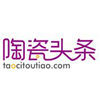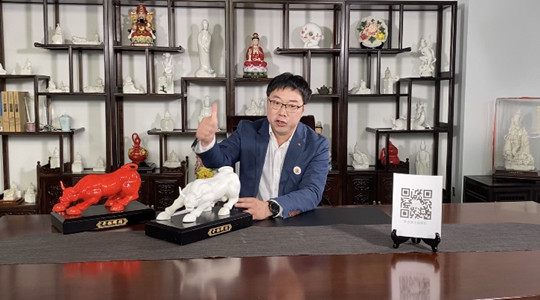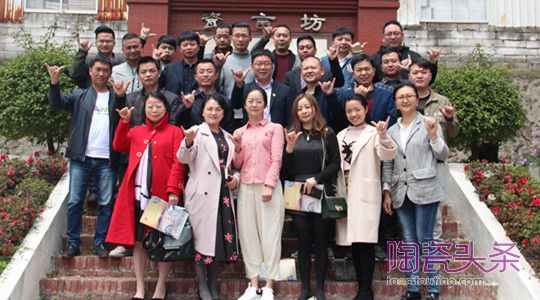外國人眼中的“中國白”|考古眼光中的“中國白” (四)——何翠媚

-
小陶陶
2021-10-06 14:22:17 德化陶瓷文化研究院、陶瓷辦2021
9170
編者按:
由柯玫瑰(Rose Kerr)、約翰?蓋爾(John Ayers)所著《——德化白瓷》(Blanc de Chine—porcelain from Dehua)于2002年經新加坡亞洲文明博物館出版,是繼唐納利《——福建德化瓷》之后的一本專門研究德化白瓷的專著,影響甚為深遠。
該書收錄的都為國外研究德化白瓷的知名學者所撰寫德化白瓷研究資料。包括柯玫瑰的“德化器物款識介紹”,海蒂(Heidi Tan)的“鑒賞家探訪”,約翰?蓋爾的“的影響”,何翠媚(Chuimei Ho)的“考古眼光中的”,郭勒遜(Kenson Kwok)的“德化雕塑結構的一點看法”, 埃娃?施特勒伯(Eva Strober)的“德累斯頓的斯特朗大帝收藏的德化瓷”,以及附錄介紹等七個部分,從不同角度介紹了德化白瓷。與此同時,該書收錄的160件德化窯精品,為Hickley家藏,后捐贈給新加坡亞洲文明博物館,是了解、品鑒、研究德化白瓷不可多得的藝術精品。
本欄目將定期精選出相關代表性文章進行翻譯,以饗讀者。然而,由于作者水平的局限,翻譯過程中難免有所錯漏,不足之處敬請各位讀者提出寶貴意見。
Blanc de Chine in archaeological perspective: a tribute to Donnelly by Chuimei Ho
(翻譯:孫延燕)
When we turn our attention to Asia. we have information that was not available to Donnelly. In the last 20 years, a corpus of valuable data from both land and underwater archaeology has revealed details of the export and dating of particular ware types. The recent ship wreck data indicates that before engaging the European market convincingly in the eighteenth century, blanc de Chine first had a rather small but sophisticated clientele in other parts of Asia. The sensational Hatcher cargo, for instance, is important for the study of early blanc de Chine trade. The cargo, which was believed to have sunk soon after 1643, included 18 blanc de Chine utensils among thousands of blue-and-white wares. These 18 pieces were tripod-censers, beakers, cups, stem cups, ewers in human ape, and tea or wine pots. Figurines of immortals were noticeably missing. As some of the cargo was better suited for Asian than European clientele, and because the ship was primarily of Asian construction, the cargo was recognised as intended for the Asian market. The wreck contained the first archeological blanc de Chine found outside China, evidence that an Asian market for this ware existed before a European one.
當我們把注意力轉向亞洲,我們有唐納利沒有的信息。在過去的20年里,來自陸地和水下考古學的大量有價值的數據揭示了特定陶器類型的輸出細節和年代。最近的沉船事故數據表明,在18世紀令人信服地進入歐洲市場之前,首先在亞洲其他地區擁有一個規模較小但經驗豐富的客戶群。例如,聳人聽聞的哈徹號貨物,對于研究早期的貿易是很重要的。這批在1643年后不久沉沒的貨物,在數千件青花瓷器中包括了18件白瓷器皿。這18件是三腳架香爐、燒杯、杯子、杯具、人猿的水壺、茶壺或酒壺。神仙俑顯然不見了。由于一些貨物更適合亞洲客戶而不是歐洲客戶,而且由于該船主要是亞洲建造的,因此貨物被認為是面向亞洲市場的。沉船上發現了第一批在中國境外發現的考古瓷器,證明這種瓷器在歐洲市場之前就已經有了亞洲市場。
If indeed the Hatcher cargo was for Asians, it reveals at least three things about Its consumers. First, this group of blanc de Chine admirers demonstrated a taste distinctively different from that of Europeans half a century later. The items could have been suitable for a Chinese scholars desk, or for wine or tea drinking among a sophisticated group. Second the few pieces of blanc de Chine ware in the cargo indicate a limited market. Third, the question of whether the pieces were in fact merchandise to be sold or personal items of the blane de Chine pieces were a mixed assortment with few identical items. This raises the crew. If the answer is the latter, what kind of social background could their owners have come from?
如果哈徹號的貨物真的是針對亞洲人的,那么它至少提供了其購買者的三個方面信息。首先,這群的崇拜者表現出了與半個世紀后歐洲人截然不同的品味。這些物品可能是中國人的文玩雅具,也可能是不同群體的葡萄酒杯或茶杯。第二,貨物中僅有的幾件瓷器表明有限的市場。第三,這些作品究竟是要出售的商品,還是船員的私人物品。如果答案是后者,他們的主人可能來自什么樣的社會背景?
The kind of tripod-censers recovered from the Hatcher Junk were probably also used by Muslims in Southeast Asia. The unusual three-legged plece at the Muzium Negara in Kuala Lumpur argues for a Muslim market for blanc de Chine. The censer might have been one of a three-piece set. It must have been specially commis- sioned because of the Arabic script carved on it before firing. Other distinctive blanc de Chine shapes for the Asian market include kendi. One kendi was recovered from Banten, West Java.
從哈徹號舢板中找到的那種三腳架香爐可能也被東南亞的穆斯林使用。在吉隆坡的馬來西亞國家博物館的這件不同尋常的三腳香爐為爭奪了穆斯林的市場。香爐可能是三件套中的一件。它在燒制前刻有阿拉伯文字,因此它一定是經過特別定制的。亞洲市場上其他獨特的瓷器包括軍持。從西爪哇省萬丹市發現了一個軍持。
The excellent records of the Dagh-registers of the Dutch East Indies Company tell us Zhangzhou(Chang Chou)was one of the ports from which blanc de Chine ware was exported. In 1680, a sailing vessel from that port arrived at Bantam in Java with 23 wicker work cases of white figurines and 40 covered pots. Given the proximity of Zhangzhou to Dehua, Volker is probably right in suggesting that this white porcelain was blanc de Chine ware. As the Zhangzhou vessel was not VOC commissioned, it is reasonable to assume that the cargo was likely meant for sale to residents in Java
荷蘭東印度群島公司Dagh登記處的杰出記錄告訴我們漳州(長州)是瓷其中的一個出口港ロ。1680年,一艘帆船從該港口抵達爪哇的班塔姆,船上有23個柳條箱的白色雕像和40個有蓋的罐子。考慮到漳州離德化很近,沃爾克認為這種白色瓷器是可能是正確的。由于漳州船沒有荷蘭東印度群島公司(簡稱VOC)授權,因此可以合理地假設貨物很可能是注定要出口給爪哇居民的。
In 1690 another Asian trading ship met its fate off the coast of South Vietnam near the seaport of Vung Tau. This ship also carried mainly Chinese blue-and-white ware and a smaller proportion of blanc de Chine pieces, which nonetheless outnumbered the Dehua white ware on the Hatcher Junk. It included 44 figurines of immortals, 551 covered boxes, 1, 108 cups, 473 saucer-dishes, 122 dishes, 698 bowls and 273 spoons of different sizes and shapes. Some of these could have been made at Lingdou kiln. It is obvious that by the end of the seventeenth century the blanc de Chine trade in Southeast Asia was in full swing, compared to the limited export to Europe at this time.
1690年,另一艘亞洲商船在越南南部靠近頭頓海港的海域遭遇厄運。這艘船也主要運載中國的青花瓷和較小比例的,盡管如此,這一數量仍超過了哈徹號德化白瓷。它包括44個神像,551個有蓋的盒子,118個杯子,473個碟子,122個盤子,698個碗和273個不同大小和形狀的勺子,其中ー些可能是在嶺兜制作的。很明顯,到了十七世紀底,南洋的貿易正處于全盛時期,相比之下,此時對歐洲的出口有限。
責任編輯:陳美珠
















